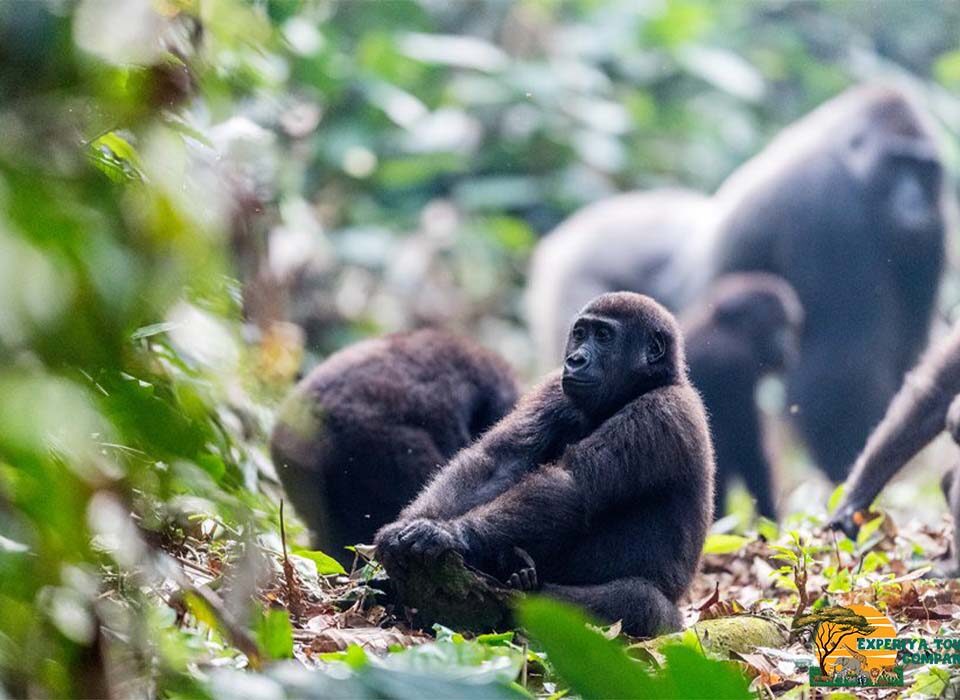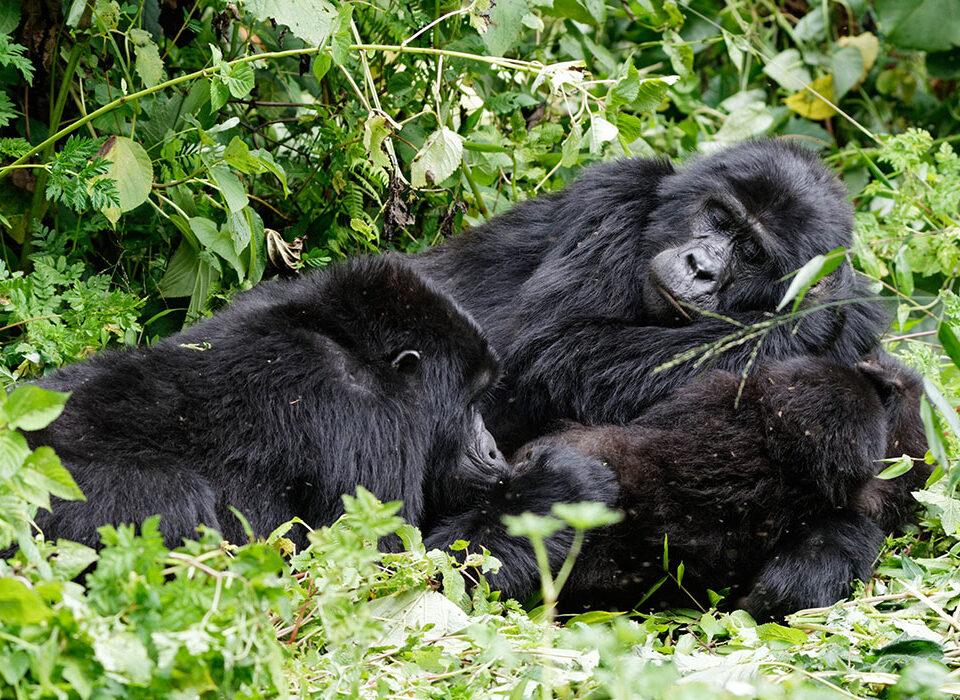
Are there Discounts for Gorilla Permits in Low Season?
June 20, 2025
Can I touch the Gorillas During a Gorilla Trek?
June 20, 2025How Many Gorilla Families are Volcanoes National Park?

How Many Gorilla Families Are in Volcanoes National Park?
Volcanoes National Park, nestled in the stunning Virunga Mountains of Rwanda, is a magical place where nature’s beauty and raw power combine in one of the world’s most extraordinary wildlife experiences. The park is home to the majestic mountain gorillas, whose survival story is nothing short of inspirational. For decades, conservationists, local communities, and governments have worked tirelessly to protect these gentle giants, ensuring that they thrive in their natural habitat. Today, Volcanoes National Park is one of the most sought-after destinations for wildlife lovers, offering visitors a once-in-a-lifetime opportunity to trek and witness these incredible creatures up close.
But just how many gorilla families call this park home? Volcanoes National Park currently boasts a variety of gorilla families, each with its own unique story. Let’s delve deeper into the lives of these families and the efforts that have gone into protecting them.
The Mountain Gorillas of Volcanoes National Park
Mountain gorillas are a subspecies of the Eastern gorilla and are one of the most endangered species in the world. With only about 1,000 individuals remaining in the wild, these gorillas are primarily found in the forests of Rwanda, Uganda, and the Democratic Republic of Congo (DRC). Volcanoes National Park, in particular, is home to one of the largest populations of mountain gorillas, making it a crucial sanctuary for their survival.
How Many Gorilla Families Are There?
As of now, there are over 10 habituated gorilla families in Volcanoes National Park, each family living in different regions of the park. The number of families has steadily increased over the years due to successful conservation efforts, and many of them are open to trekking by tourists, which provides essential funding for the continued protection of these animals. However, it’s important to note that the exact number of families can change over time due to natural factors such as births, migrations, and changes in the dynamics of the gorilla groups.
The Gorilla Families of Volcanoes National Park
Each of the gorilla families in Volcanoes National Park is unique, and visitors have the privilege of meeting them during their trek. Some of the most well-known gorilla families include:
1. Susa Group
The Susa Group is one of the most famous and largest families in the park, often the highlight for many visitors. This family has a long and rich history, and it was the first gorilla group to be habituated for tourism in the 1970s. The Susa Group consists of over 30 members and is led by the silverback gorilla, Karisimbi, who is known for his strength and wisdom. The group’s members are often playful and curious, making for an exciting and memorable trek.
2. Amahoro Group
The Amahoro Group is another well-known family, consisting of about 17 members. The group is led by the gentle silverback Ubumwe, who is loved for his calm nature. The word Amahoro means peace in Kinyarwanda, which perfectly reflects the serene dynamics of this group. Despite its peaceful reputation, the Amahoro Group is also famous for occasionally engaging in intense interactions with other families, as rival silverbacks often challenge each other for dominance.
3. Group 13
Group 13, often referred to as the lost group, was established relatively recently and is made up of a smaller number of members. This group has garnered attention due to its unique structure and the way its members interact with each other. The leader of this group is the silverback Ishami, who has successfully managed the group and guided them through various challenges.
4. Hirwa Group
The Hirwa Group is a relatively new family, formed after members from different groups came together. The Hirwa Group is known for its dynamic nature and the young, energetic gorillas that comprise it. The group is led by Silverback Hirwa, who, despite his youth, has shown great leadership skills. This group is often praised for its adaptability and for successfully forming a tight-knit unit.
5. Kwitonda Group
The Kwitonda Group, one of the largest and most stable families in Volcanoes National Park, comprises 19 members. In the southwestern part of the park, they live peacefully. The silverback Kwitonda has been a strong leader, guiding the family through challenging times and ensuring their survival in the wild.
Gorilla Trekking Experience
The gorilla trekking experience in Volcanoes National Park is an unforgettable adventure. It starts with a briefing by park rangers, who provide crucial information about the gorillas, the rules for trekking, and safety guidelines. Afterward, a park ranger assigns visitors to a specific group, and the trek to find the gorillas begins.
The trek itself can be physically demanding because you often find the gorillas in remote areas of the park. However, the rewards are immense. Once you reach the family, you’ll be able to observe the gorillas in their natural habitat interacting, playing, and sometimes even showing signs of affection for one another. Watching these magnificent creatures in such close proximity is a humbling and life-changing experience.
Conservation Efforts and Challenges
The increase in the number of gorilla families in Volcanoes National Park is a testament to the hard work of the conservationists and local communities involved in protecting these animals. Rwanda’s government, alongside various conservation organizations like the International Gorilla Conservation Programme (IGCP), has implemented a range of strategies to safeguard the gorillas. These include anti-poaching initiatives, habitat restoration, community engagement, and strict regulations on tourism.
However, the journey is far from over. While the mountain gorilla population has been steadily increasing, they still face significant threats, including habitat loss due to human encroachment, disease transmission from humans, and the potential effects of climate change. As a result, ongoing efforts are essential to ensure the gorillas continue to thrive in their environment. (This emphasizes the importance of the efforts.)
The Role of Tourism in Gorilla Conservation
Tourism plays a significant role in the conservation of mountain gorillas. Trekking permits generate much-needed funds, which the park reinvests into its management and conservation efforts. (Emphasizes the permits’ role in generating funds, with the park as the actor for reinvestment). The money raised from tourism helps support anti-poaching patrols, community projects, infrastructure development, and scientific research.
In addition, tourism provides local communities with a sustainable livelihood. The park provides jobs for rangers, porters, and guides, and nearby communities benefit from the revenues generated by visitors. This creates a strong incentive for the local population to protect the gorillas and their habitat.
The Future of Gorilla Families in Volcanoes National Park
Looking ahead, the future of the gorilla families in Volcanoes National Park is promising. With continued conservation efforts and growing awareness about the importance of protecting these animals. the mountain gorillas of Volcanoes National Park may continue to thrive for generations to come.
However, challenges remain. As the human population continues to grow, the park must balance the need for conservation with the needs of the surrounding communities. Strengthening partnerships between local governments, conservation organizations, and the tourism industry will be key to ensuring that the gorillas have a safe and sustainable future.
Conclusion
Volcanoes National Park is home to some of the most awe-inspiring creatures on the planet: the mountain gorillas. By visiting Volcanoes National Park and supporting sustainable tourism, you are contributing to the conservation of these incredible gorillas. (This emphasizes the transformative aspect of the experience.)



